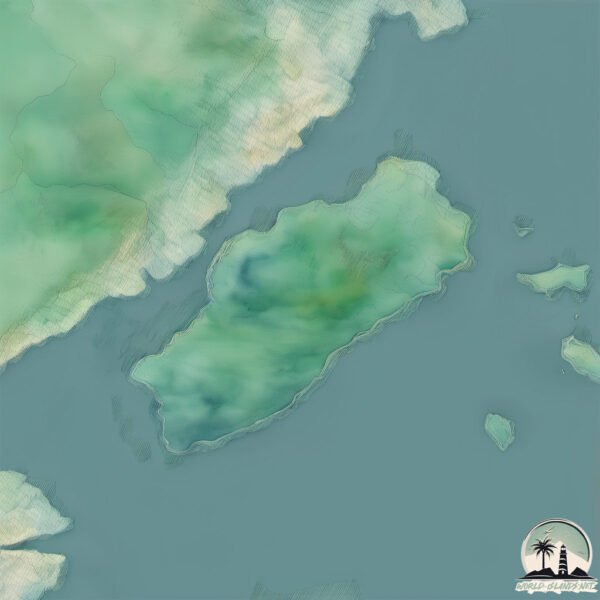Welcome to Itsuku Shima , a Temperate island in the Seto Naikai or Inland Sea, part of the majestic Pacific Ocean. This guide offers a comprehensive overview of what makes Itsuku Shima unique – from its geography and climate to its population, infrastructure, and beyond. Dive into the details:
Geography and size of Itsuku Shima
Size: 30.5 km²Coastline: 29 kmOcean: Pacific OceanSea: Seto Naikai or Inland SeaContinent: Asia
Itsuku Shima is a Medium Island spanning 30 km² with a coastline of 29 km.
Archipel: Japan – An East Asian archipelago comprising four main islands and numerous smaller ones, known for its rich history, technological advances, and distinct culture.
Tectonic Plate: Philippine Sea – An oceanic tectonic plate beneath the Philippine Sea, east of the Philippines. It’s involved in complex interactions with the surrounding Eurasian, Pacific, and Indo-Australian plates, leading to significant volcanic and seismic activity in the region.
The geographic heart of the island is pinpointed at these coordinates:
Climate and weather of Itsuku Shima
Climate Zone: TemperateClimate Details: Humid Subtropical ClimateTemperature: Hot Summer
Climate Characteristics: With continuous rainfall and hot summers, this climate is common in some coastal regions, supporting diverse vegetation.
Topography and nature of Itsuku Shima
Timezone: UTC+09:00Timezone places: Asia/TokyoMax. Elevation: 381 m Mean Elevation: 147 mVegetation: Evergreen Needleleaf ForestTree Coverage: 89%
The mean elevation is 147 m. The highest elevation on the island reaches approximately 381 meters above sea level. The island is characterized by Hills: Gently sloping landforms with rounded tops, having a maximum elevation between 200 and 500 meters. Hills contribute to a varied landscape on islands.
Dominating Vegetation: Evergreen Needleleaf Forest
Vegetation: 6 vegetation zones – Very Highly Diverse Island
Infrastructure and Travelling to Itsuku Shima
Does the island have a public airport? no .
Does the island have a major port? no .
The mean population of Itsuku Shima is 229 per km². Itsuku Shima is Moderately Inhabited. The island belongs to Japan .
The name of the island resonates across different cultures and languages. Here is how it is known around the world: Arabic: هونشو; Spanish: Honshū; French: Honshū; Portuguese: Honshu; Russian: Хонсю; Chinese: 本州
Continuing your journey, Nōmi Jima is the next notable island, situated merely km away.
Miyajima Island FIRST TIMERS Tour! Is one day ENOUGH?
Join us, as we explore the enchanting Miyajima Island, a true bucket list destination! We finally got to witness the magic of the ...
Miyajima Island FIRST TIMERS Tour! Is one day ENOUGH?
Join us, as we explore the enchanting Miyajima Island, a true bucket ...
Join us, as we explore the enchanting Miyajima Island, a true bucket list destination! We finally got to witness the magic of the ...
What to do in Hiroshima & Miyajima | 6 Must Try Travel Ideas
Hiroshima and Miyajima Island are essential places to visit on a trip ...
Hiroshima and Miyajima Island are essential places to visit on a trip to Japan. We pass through the city in search of Okonomiyaki ...
Miyajima Island Japan Travel Guide: 11 BEST Things To Do On Miyajima Island (Itsukushima)
This Miyajima Island travel guide shares the best things to do on ...
This Miyajima Island travel guide shares the best things to do on Miyajima Island. -------------- How to find cheap flights and travel ...
Japan is classified as Developed region: G7: Group of Seven – Major advanced economies, including Canada, France, Germany, Italy, Japan, the United Kingdom, and the United States. The level of income is High income: OECD.
News – Latest Updates and Headlines from Itsuku Shima
Stay informed with the most recent news and important headlines from Itsuku Shima. Here’s a roundup of the latest developments.
Loading...
Please note: The data used here has been primarily extracted from satellite readings. Deviations from exact values may occur, particularly regarding the height of elevations and population density. Land area and coastline measurements refer to average values at mean high tide.

